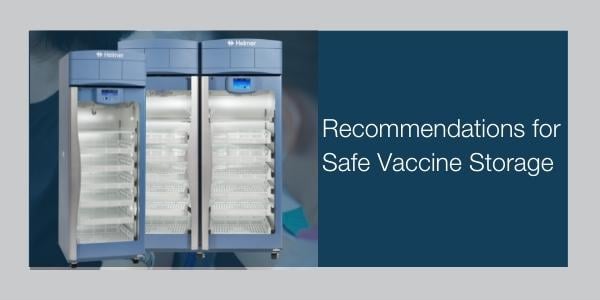The CDC Vaccine Storage and Handling Toolkit provides comprehensive information, recommendations, and resources to assist medical professionals in properly storing and handling vaccine inventory, including cold storage guidance.
Because of the narrow temperature range (between 2-8°C for most vaccines) required to ensure vaccines remain safe and effective, the toolkit provides guidance around selecting vaccine refrigerators and freezers that can reach and maintain those temperatures under real-world conditions. While purpose-built pharmaceutical-grade units designed to store vaccines are preferred, the toolkit indicates household units are acceptable alternatives under the right conditions.
But what are those conditions, and what additional steps go into ensuring a household unit is suitable for vaccine storage?
- The addition of a temperature monitoring device (TMD). The toolkit recommends a digital data logger (DDL) that provides accurate temperature information, including temperature excursion details and the ability to store temperature data long-term for analysis and audit.
- The placement of water bottles in the refrigerator door, on the top rack, floor, and along the sides of the unit to serve as a ballast and help with temperature regulation.
However, during a recent study from the National Library of Medicine at the National Institutes of Health, the question of using water bottles as a thermal ballast for temperature stability in household refrigerators used for vaccine storage is put to the test, and the results are concerning.
Two household units, a standalone unit and a unit with a separate refrigerator and freezer, were tested. Each unit was filled with a varying number of water bottles to serve as a thermal ballast. Performance was tested at 8, 18, and 25 percent of the refrigerator capacity filled with water bottles.
During the repeated door opening simulation, the average vaccine temperature variation in the standalone unit exceeded 3°C during all trials, regardless of thermal ballast load. In the combination unit, the average vaccine temperature exceeded 3°C at 8 percent thermal ballast load, approached 3°C at 18 percent thermal ballast load, and was above 2°C at a 25 percent thermal ballast load.
Other Blogs You Might Be Interested In...
- Importance of Temperature Uniformity for Vaccine Storage
- Medical-grade vaccine storage can help prevent vaccine and financial loss
- USP’s COVID-19 Vaccine Handling Toolkit Addresses Challenges
- Helmer Scientific’s GX Solutions Refrigerators, Freezers Certified to New NSF/ANSI Vaccine Storage Safety Standard
This poses a question: Are the patient safety, vaccine efficacy, and financial risks of temperature excursion presented by household units used for vaccine storage, even when using water bottles as thermal ballasts, worth any perceived convenience or cost-saving?
Helmer Scientific supports the safe handling and storage of vaccines. To learn more about best practices for effective vaccine storage, view our guide.





